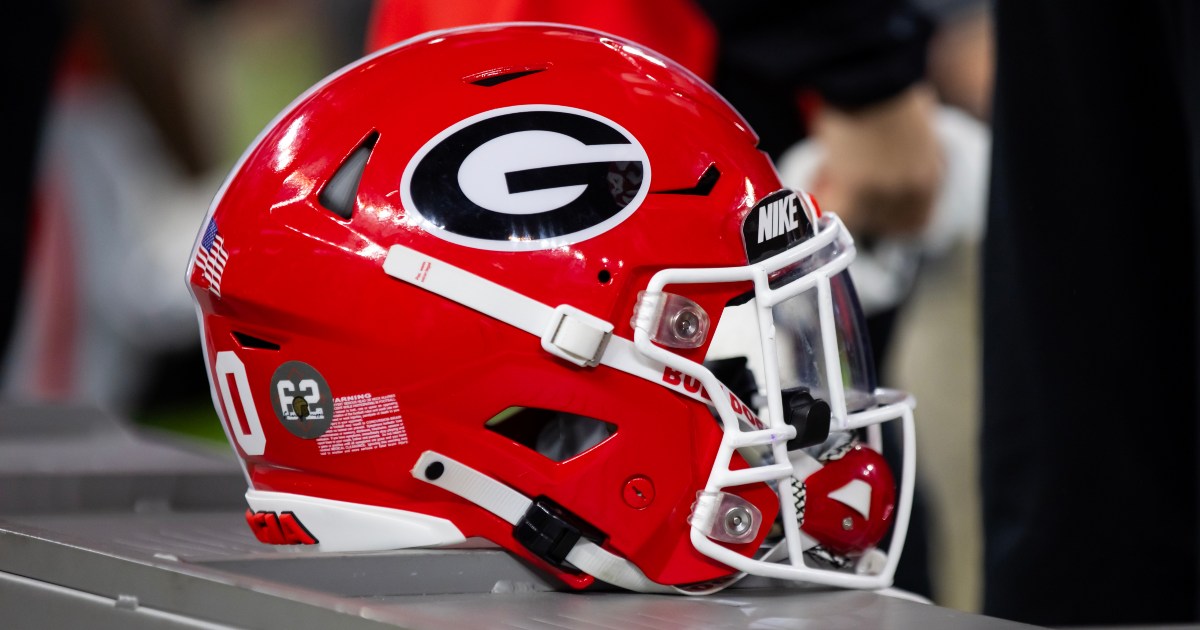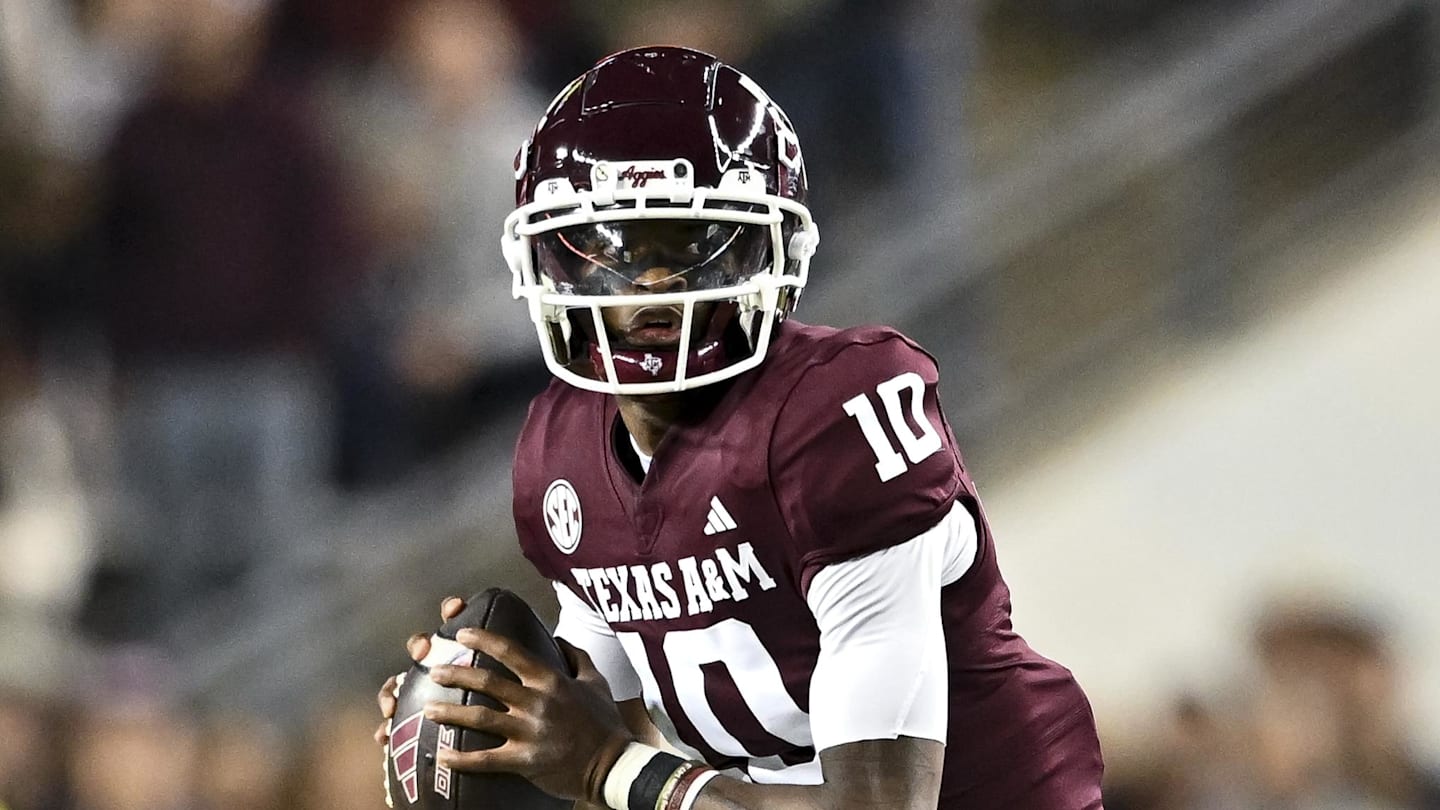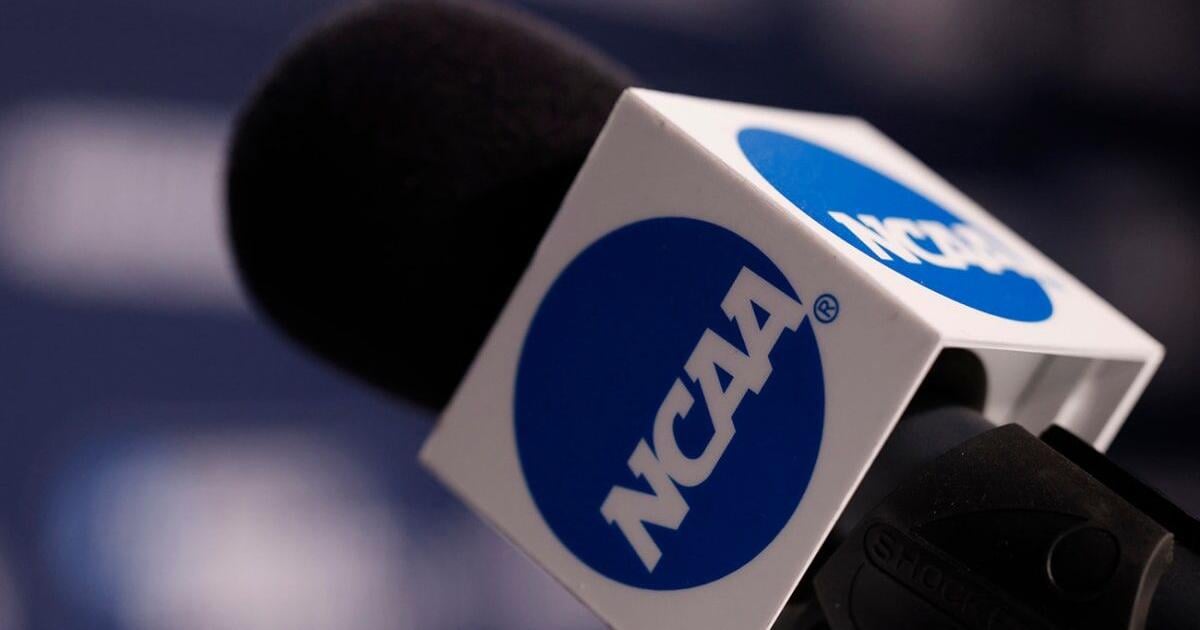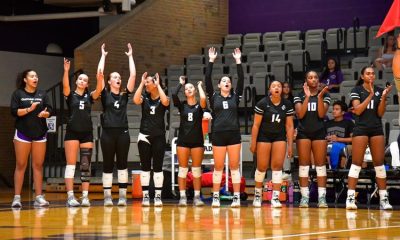NIL
ATLANTIS PARADISE ISLAND UNVEILS LINEUP FOR 2025 BATTLE 4 ATLANTIS MEN'S …
Celebrating its 14th year, Battle 4 Atlantis is a hallmark of early-season college basketball, known for its electric atmosphere and elite matchups in an unforgettable location. The men’s tournament will feature 12 high-stakes games played over three days in the resort’s famed Imperial Arena. The 2025 Battle 4 Atlantis men’s bracket includes: Colorado State University […]


Celebrating its 14th year, Battle 4 Atlantis is a hallmark of early-season college basketball, known for its electric atmosphere and elite matchups in an unforgettable location. The men’s tournament will feature 12 high-stakes games played over three days in the resort’s famed Imperial Arena.
The 2025 Battle 4 Atlantis men’s bracket includes:
- Colorado State University
- St. Mary’s College
- University of South Florida
- Vanderbilt University
- Virginia Commonwealth University (VCU)
- Virginia Tech
- Western Kentucky University
- Wichita State University
Each team will compete in a 12-game, three-day tournament, delivering high skilled action from start to finish. Widely recognized as one of the toughest and most exciting preseason tournaments in college basketball, Battle 4 Atlantis continues to be a launch pad for championship-caliber teams.
Ticket packages go on sale on April 17th and will include multiple options—from single-day access to full tournament passes, and premium courtside experiences. Fans can build their ultimate Bahamas basketball getaway by bundling tickets with specially priced resort accommodations at Atlantis Paradise Island. Additional information and reservations are available here.
The 2025 Battle 4 Atlantis women’s tournament teams will be announced soon.
“Hosting these elite teams in one of the most unique and vibrant environments in sports is something we look forward to every year,” said Audrey Oswell, President and Managing Director, Atlantis Paradise Island. “This year’s field brings a dynamic mix of talent and tradition, and we are ready to welcome esteemed players and their fans back to Atlantis Paradise Island in November.”
The Battle 4 Atlantis is a highlight in Atlantis Paradise Island’s all-star lineup of world-class entertainment and extraordinary guest experiences. Those attending the tournament will also experience the resort’s celebrated Bahamian hospitality, breathtaking oceanfront setting, and recent landmark $150 million transformation, which included updates to the world renowned Atlantis Casino, guestrooms, restaurants and lounges.
For more information or to reserve your Battle 4 Atlantis experience, visit atlantisbahamas.com.
About Atlantis Paradise Island:
Atlantis Paradise Island, a lush, oceanside resort located on Paradise Island in the Bahamas, is a dynamic destination and offers visitors bold multimillion-dollar renovations, exciting new partnerships, and reimagined guest experiences. Bahamian culture and the spirit of its beloved team members are the heart and soul of this iconic, legendary resort. Atlantis’ immersive programming connects guests to the rich history, art, people, food, and festivities of the Bahamas while remaining dedicated to sustainability and environmental conservation.
Home to Aquaventure, one of the world’s largest waterparks, the 141-acre waterscape of thrilling slides and river rides features 14 pools and five miles of white sand beaches. Atlantis is also home to the largest open-air marine habitat in the world, with over 65,000 aquatic animals from 250 species making their home in natural ocean-fed lagoons and habitats. Dolphin Cay, the unparalleled marine animal conservation, rehabilitation and education center, provides guests with a once-in-a-lifetime opportunity to learn and interact with nature’s most fascinating mammals.
Atlantis has five unique lodging options: the grand, iconic newly renovated towers of The Royal, the family-friendly ambiance at The Coral, water-side villas at Harborside Resort, all-suite luxury accommodations at The Cove, and residential-style living at The Reef.
Guests can choose from an impressive collection of over 40 restaurants, bars, and lounges with celebrity chef culinary masterpieces, including Fish by José Andrés, Nobu by Nobu Matsuhisa, and Paranza by Michael White. With its unrivaled meeting and convention space and the well-appointed Atlantis Marina overlooking Marina Village, the Atlantis experiences are endless and unique to each traveler. Additional resort amenities include the tranquil Mandara Spa, a newly opened tennis and pickleball center, indoor and outdoor regulation basketball courts, a 500-seat movie theater, Atlantis Kids Adventures (AKA) for children ages 3-12, a gaming arcade, CRUSH- a teen nightclub, Jokers Wild comedy club, an award-winning 18-hole golf course designed by Tom Weiskopf, the renowned and newly redecorated Atlantis Casino, an array of luxury and boutique duty-free shopping plus just opened: Good Lies Mini-Golf and Lost City Escapes: Escape Room. For more information and reservations, please visit atlantisbahamas.com.
SOURCE Atlantis, Paradise Island

NIL
Georgia JUCO commit Seven Cloud arrested on domestic battery charge
Georgia JUCO commit Seven Cloud is facing charges regarding domestic battery that stem from an April incident in Butler County. The defensive lineman appeared in front of a judge on Monday, July 14, where he was formally charged. According to the Butler County Times Gazette, Judge Chad Crum found probable cause to charge Cloud and […]

Georgia JUCO commit Seven Cloud is facing charges regarding domestic battery that stem from an April incident in Butler County. The defensive lineman appeared in front of a judge on Monday, July 14, where he was formally charged.
According to the Butler County Times Gazette, Judge Chad Crum found probable cause to charge Cloud and ruled him to have no contact with the victim moving forward. It is a Class B misdemeanor and he will be back in court on Sept. 22.
The report states that the incident occurred on April 20. The Butler County Sheriff’s office was called to the scene of an altercation between Cloud and his significant other. He was arrested and subsequently bonded out. Police allege that Cloud “did knowingly cause physical contact with another person, in a rude, angry or insulting manner.”
This is not the first incident where the police have been involved with Cloud and his significant other. On March 27, Cloud was charged with disorderly conduct after allegedly destroying her cell phone. That is also classified as a misdemeanor and both charges came from the BCC Department of Public Safety.
Cloud is an All-American for Butler Community College and is committed to the Bulldogs’ 2026 class. He has had an interesting ride, originally committing to Georgia on January 7, 2021. The 6-foot-4, 300-pound redshirt sophomore went on to commit to the Bulldogs four years later.
So far during his time at Butler, Cloud has posted 48 tackles, including 9.5 tackles for loss and 5.5 sacks. He also had three pass breakups, two forced fumbles and one fumble recovery to his credit.
However, it’s unclear what the future for Cloud will look like after landing such a charge. He is set to play this upcoming season at Butler before moving on to Georgia in 2026. Butler declined to comment on the matter, per the Gazette’s report. Of course, Cloud is presumed innocent until proven guilty on all charges.
Before college, Cloud was a three-star prospect according to the On3 Industry Rankings,
a proprietary algorithm that compiles ratings and rankings from all four primary recruiting media services. He was the No. 1,561 overall player in his class, and No. 161 defensive lineman in that cycle.
Georgia will begin its 2025 college football season on Saturday, Aug. 30, against Marshall at home. Looking ahead, they will kick off SEC play against Tennessee during Week 3 on Sept. 13.
NIL
SEC stalwart predicts Texas A&M to make College Football Playoff in 2025
Texas A&M could maybe be one of the most slept-on teams in the entire country next year with the way they’re currently being discounted by many members of the media. This is an Aggie team that is set to take strides forward after being on the brink of an SEC championship berth last year— albeit […]

Texas A&M could maybe be one of the most slept-on teams in the entire country next year with the way they’re currently being discounted by many members of the media. This is an Aggie team that is set to take strides forward after being on the brink of an SEC championship berth last year— albeit with an easier schedule than they’ll have in 2025, but the point stands.
With so many factors favoring a big season for the Aggies, it’s puzzling that there’s not more public momentum around them being a dark horse candidate to make some postseason noise. They certainly cut the profile of a team that could do so, but you wouldn’t know it by surveying the headlines.
One veteran of the league, though, has his eye on the Aggies to do more than make a little noise— he sees them getting to the playoff. Rusty Mansell, a longtime insider for the Georgia Bulldogs, has made the call that the Aggies will be a part of the College Football Playoff in 2025.
Rusty Mansell predicts Texas A&M football to make College Football Playoff in 2025
One of the most trusted voices covering the Georgia Bulldogs for years, Mansell has been around this conference for quite some time. Diving into the Aggies apparently gave him some maroon and white optimism, as he told Michael Bratton while at SEC Media Days.
Mansell was impressed by what the Aggies have going into next year and when asked for a bold take by Bratton on the “That SEC Podcast,” he ventured that A&M would be part of the 12-team group. “They’ve got enough,” he said, calling Marcel Reed a “problem” for opponents.
He and Bratton agreed that Reed was overlooked and underrated, with Bratton comparing Reed to a media darling in DJ Lagway. Mansell mentioned Reed’s accuracy as a plus— something that Aggie fans know he showcased well down the stretch after it being a question mark earlier on.
Hopefully time will prove Mansell right. He has a good outlook here and I think he’s diagnosed things correctly for the Aggies. Don’t be surprised if, come November, these discussions are far louder than they are right now.
NIL
Roethlisberger Concerned College NIL Is ‘Taking The Love Of The Game Away’
Ben Roethlisberger expresses concern about the impact of college NIL (Name, Image, Likeness) deals on the love of the game, suggesting that financial incentives may diminish genuine passion among players. While he acknowledges the benefits, such as improved financial literacy and the ability for players to support their families, he worries that the emphasis on […]

Ben Roethlisberger expresses concern about the impact of college NIL (Name, Image, Likeness) deals on the love of the game, suggesting that financial incentives may diminish genuine passion among players. While he acknowledges the benefits, such as improved financial literacy and the ability for players to support their families, he worries that the emphasis on money could lead teams to prefer less talented but more motivated players. He reflects on historical sentiments about amateurism in college sports and suggests the need for guardrails in the evolving NIL landscape to protect players and maintain the essence of competition.
By the Numbers
- Highly touted OT recruit Felix Ojo secured a three-year deal worth $5.1 million with Texas Tech.
- The NIL model is generating significant earnings for college athletes that were previously kept under the table.
State of Play
- NIL deals have blurred the lines between amateur and professional sports, changing recruitment dynamics.
- Players are entering the NFL with previous financial experience from NIL, altering team drafting strategies.
What’s Next
Moving forward, the college football landscape may see increased regulations to manage NIL deals and protect both players and institutions. As this situation evolves, it will be critical to maintain a balance between financial opportunities and preserving the competitive integrity of the sport.
Bottom Line
Roethlisberger’s insights highlight a crucial tension in modern college athletics: the need for compensation versus the preservation of passion for the sport. Stakeholders must consider how to navigate these changes without compromising the essence of college football.
NIL
Georgia offensive lineman Jahzare Jackson arrested on drug-related charges
A Georgia football player is facing charges after he was arrested on Wednesday. Sophomore offensive lineman Jahzare Jackson was charged with felony possession of marijuana of more than one ounce, according to a report from the Athens Banner-Herald. Marc Weiszer of the Banner-Herald reports that Jahzare Jackson now faces an additional three drug-related charges. In […]

A Georgia football player is facing charges after he was arrested on Wednesday. Sophomore offensive lineman Jahzare Jackson was charged with felony possession of marijuana of more than one ounce, according to a report from the Athens Banner-Herald.
Marc Weiszer of the Banner-Herald reports that Jahzare Jackson now faces an additional three drug-related charges. In addition to the charge above, he also faces possession and use of drug-related objects, possession of marijuana less than an ounce and holding or supporting a wireless device with any part of his body. All three of those charges are misdemeanors.
Jackson was booked into the Clarke County Jail on Wednesday evening just before midnight and spent roughly four and a half hours there. He was released on bonds totaling $5,030, per the Banner-Herald.
Jahzare Jackson is not the first Georgia player to run afoul of the law this offseason. In March, receiver Nitro Tuggle and offensive lineman Marques Easley were suspended following traffic-related infractions.
Meanwhile, a current Georgia commitment is facing charges related to an alleged domestic battery. That news broke on Saturday.
Seven Cloud arrested on domestic battery charge
Jahzare Jackson was the second player or commitment in as many days to make headlines for a recent legal issue. Georgia JUCO commit Seven Cloud is facing charges regarding domestic battery that stem from an April incident in Butler County. The defensive lineman appeared in front of a judge on Monday, July 14, where he was formally charged.
According to the Butler County Times Gazette, Judge Chad Crum found probable cause to charge Cloud and ruled him to have no contact with the victim moving forward. It is a Class B misdemeanor and he will be back in court on Sept. 22.
The report states that the incident occurred on April 20. The Butler County Sheriff’s office was called to the scene of an altercation between Cloud and his significant other. He was arrested and subsequently bonded out. Police allege that Cloud “did knowingly cause physical contact with another person, in a rude, angry or insulting manner.”
This is not the first incident where the police have been involved with Cloud and his significant other. On March 27, Cloud was charged with disorderly conduct after allegedly destroying her cell phone. That is also classified as a misdemeanor and both charges came from the BCC Department of Public Safety.
While Cloud has not yet joined the Georgia program, Jahzare Jackson played in every game last season. He was expected to compete for a backup job on the offensive line this fall.
On3’s Barkley Truax also contributed to this report.
NIL
Letters
The impressive financial gymnastics Taylor Jacobs, who oversees name, image and likeness, and her team executed to enable LSU to be financially competitive in paying their athletes to play gives a literal definition to winning at all costs. There are liabilities associated with pay to play that should be considered. Amateurism in college and high […]



The impressive financial gymnastics Taylor Jacobs, who oversees name, image and likeness, and her team executed to enable LSU to be financially competitive in paying their athletes to play gives a literal definition to winning at all costs.
There are liabilities associated with pay to play that should be considered. Amateurism in college and high school sports no longer exists. Excelling at sports used to be about fulling a dream to be the best through hard work and sacrifice and to experience the sheer joy of accomplishment. Now, competing is complicated by a paycheck.
Have college athletes become mercenaries playing for the highest bidder? The money has become preeminent in discussions with players and has irrevocably changed players’ relationships with coaches and their teams. Forget about mentorship and team loyalty, just show me the money.
LSU athletes are professionals by definition. They are contract workers but could become employees if they are allowed to collectively bargain. How will that work?
Wining is a good thing except when the costs are too high.
JIM ROBERTS
St. George
NIL
SEC football teams with the most cupcake routes to the College Football Playoff
Did SEC football programs learn how to schedule from last season’s CFB Playoff Selection Committee? Though few games are added less than a year out, appearances are that some SEC teams believe scheduling as many cupcakes as possible is the way to go. Recently, On3’s Pete Nakos picked 11 teams with the weakest out-of-conference (OOC) […]

Did SEC football programs learn how to schedule from last season’s CFB Playoff Selection Committee? Though few games are added less than a year out, appearances are that some SEC teams believe scheduling as many cupcakes as possible is the way to go.
Recently, On3’s Pete Nakos picked 11 teams with the weakest out-of-conference (OOC) schedules in the 2025 season. Six of the 11 are SEC football teams. One of the six, Vanderbilt, gets a pass. Thanks to the Commodores’ SEC schedule, ESPN Analytics ranks Vanderbilt as having the nation’s second-toughest 12-game schedule. Another SEC team, Georgia, is rated as the 8th-toughest FBS schedule, with Alabama and Texas playing in Athens. Nakos included Auburn in the weakest OOC schedules, but with the Tigers not being a legit playoff contender, the weakness is not material.
Three of the other SEC teams are playoff contenders. For each of the three a big reason why is their out-of-conference schedule.
The three SEC football teams hoping to cakewalk to a Playoff at-large bid are Tennessee, Ole Miss, and Missouri. The three fanbases will loudly contend their teams are SEC championship contenders. But ESPN gives the Vols a 4.2% probability of winning the SEC. Ole Miss is at 2.8% and Missouri is at 0.6%. The realistic playoff goal for each team is a 10-2 or 9-3 season. None of them can afford to lose an out-of-conference game.
Using an Athlon ranking of the 136 FBS teams, Missouri has a greater risk than the Vols or the Rebels to lose an out-of-conference game. In Week 2, Missouri hosts a home game against No. 35-ranked Kansas. The Tigers open with FCS, Central Arkansas, and have two more catwalk games against No. 92 Louisiana and No. 135 UMass.
Tennessee opens with No. 57 Syracuse, in Atlanta, in what is almost a home game for the Vols. In addition, Tennessee plays FCS, East Tennessee State, No. 125 UAB, and No. 132 New Mexico State.
Four games into the Ole Miss season, Tulane (No. 48) plays the Rebels in Oxford. Ole Miss also plays FCS, The Citadel, No. 97 Washington State, and No. 112 Georgia State.
Ole Miss and Missouri have no road, out-of-conference games. Tennessee can’t claim one either.
SEC Football requires at least one non-SEC Power Opponent
For the record, Alabama Football also has two cupcakes: FCS Eastern Illinois and No. 116 ULM. But, the Crimson Tide plays two non-SEC Power teams in FSU (No. 42) and Wisconsin (No. 45), with the FSU game in Tallahassee.
-

 College Sports2 weeks ago
College Sports2 weeks agoWhy a rising mid-major power with an NCAA Tournament team opted out of revenue-sharing — and advertised it
-

 Motorsports2 weeks ago
Motorsports2 weeks agoTeam Penske names new leadership
-

 Youtube3 weeks ago
Youtube3 weeks ago🚨 BREAKING: NBA MVP Shai Gilgeous-Alexander signs the RICHEST annual salary in league history
-

 Sports2 weeks ago
Sports2 weeks agoNew 'Bosch' spin
-

 Sports5 days ago
Sports5 days agoVolleyball Releases 2025 Schedule – Niagara University Athletics
-

 Fashion7 days ago
Fashion7 days agoEA Sports College Football 26 review – They got us in the first half, not gonna lie
-

 Sports2 weeks ago
Sports2 weeks agoE.l.f Cosmetics Builds Sports Marketing Game Plan Toward Bigger Goals
-

 College Sports2 weeks ago
College Sports2 weeks agoMSU Hockey News – The Only Colors
-

 College Sports1 week ago
College Sports1 week agoBuford DB Tyriq Green Commits to Georgia
-

 Health7 days ago
Health7 days agoCAREGD Trademark Hits the Streets for Mental Health Month
























































